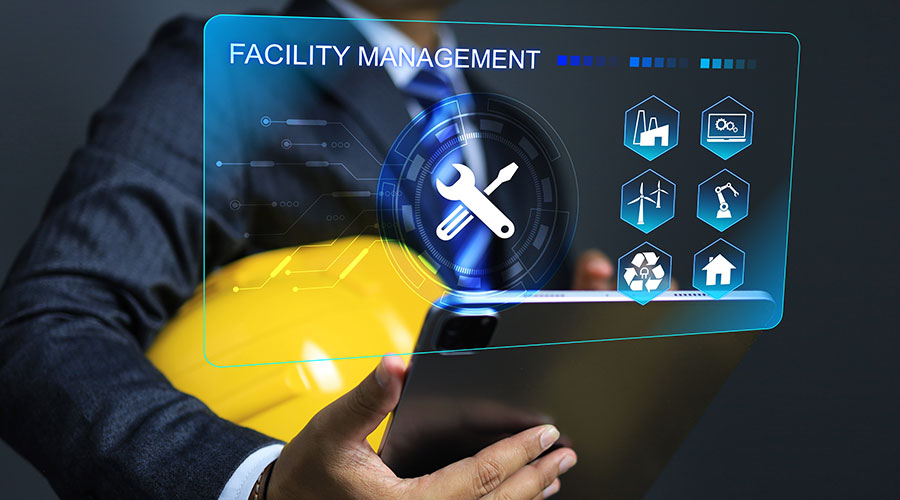How IoT Transforms Data-Driven Facility Management
Even with the best intentions, managers can find that data initiatives stall.
Internet of things (IoT) devices — wireless sensors, smart meters and connected controllers — serve as real-time data harvesters. A network of temperature, humidity, occupancy and vibration sensors can feed a central platform, giving managers an always-on view of building health.
Not every IoT solution fits every facility. When evaluating products, managers need to weigh:
- Scalability. Can managers add hundreds or thousands of sensors without network bottlenecks?
- Interoperability. Does the technology support open protocols, such as a message queuing service or BACnet, to ease integration?
- User experience. Are dashboards intuitive for technicians and managers?
A scalability misstep can leave managers juggling half-dead devices, and a clunky interface can turn powerful data into unused clutter.
Successful integration of IoT with existing systems resembles a well-choreographed dance. To achieve this goal, managers can follow these best practices:
- Establish data highways. Use middleware or integration platforms to normalize data streams from multiple vendor systems.
- Automate workflows. Route critical alerts directly into a computerized maintenance management system.
- Secure endpoints. Implement network segmentation and encryption to protect sensitive operational data.
Smooth integration ensures that insights flow seamlessly to decision makers and that data becomes actionable rather than siloed.
A dashboard that updates in real time can help managers identify a spike in energy consumption or an uptick in overdue work orders before they become headaches. Interactive visuals — including heat maps of occupancy, trend lines of pump efficiency and pie charts of maintenance spending — translate complex data sets into intuitive insights. They also enable managers to gain the clarity to make strategic adjustments, such as shifting cleaning schedules to off-peak hours or reprioritizing capital projects by lifecycle stage. To ensure clarity and impact:
- Know the audience. Executives might crave high-level ROI charts, while technicians want drill-down graphs of failure modes.
- Keep it simple. Highlight two or three critical metrics per dashboard.
- Use consistent color schemes. Assign colors to status categories, and apply them uniformly.
- Add context. Annotate visuals with timeframes, goal lines and brief commentary to frame the narrative.
When visuals are designed thoughtfully, they become strategic tools rather than mere showpieces.
Obstacles and opportunities
Even with the best intentions, managers can find that data initiatives stall. Typical roadblocks include: skills gaps in data analysis and interpretation; fragmented systems that do not communicate with each other; information overload leading to analysis paralysis; budget constraints for new tools and training; resistance from stakeholders unfamiliar with data-driven culture; and strategies for effective data management
To navigate these hurdles with a phased approach, managers can invest in training by offering workshops on data literacy, dashboarding and basic analytics. They can start small with pilot projects, such as monitoring one critical asset, to build credibility and demonstrate ROI. They also can standardize data sources by agreeing on common data definitions and formats to avoid confusion.
Another tactic is to prioritize KPIs by limiting metrics to a core set of critical indicators and expanding only as capacity grows. Finally, managers can secure executive buy-in by presenting clear business cases, such as showing the way a 5 percent reduction in energy spend translates into tangible savings.
Several technology innovations promise to continue redefining data-driven facilities management:
- Artificial intelligence (AI) and deep learning. From anomaly detection to automated root-cause analysis, intelligent algorithms will surface insights faster than humanly possible.
- Digital twins. Virtual replicas of facilities that run simulations to test changes in layout, equipment settings and emergency scenarios without disrupting operations.
- Edge computing. Processing data locally on devices reduces latency for real-time control, and it preserves bandwidth.
- Augmented reality (AR). Technicians equipped with AR glasses can overlay equipment schematics or maintenance histories directly onto physical assets to accelerate repairs and reduce errors.
How can managers stay ahead in their efforts to put data to work in their facilities?
They can cultivate adaptability by building cross-functional teams that blend engineering, data science and IT skills. They can update technology roadmaps by regularly reassessing the digital stack to phase out legacy systems and onboard emerging solutions. They also can foster continuous learning by leveraging vendor partnerships, professional associations and online courses to keep your team sharp on the latest tools and methodologies.
Data-driven facility management is no longer an abstract concept. It is a strategic imperative. By defining and benchmarking critical KPIs, deploying predictive analytics, integrating IoT, and visualizing insights effectively, maintenance and engineering managers can elevate operational performance, drive cost savings and enhance occupant satisfaction. While obstacles such as system silos and skill gaps can slow progress, a phased, prioritized approach paves the way for adoption and sustained success.
Looking forward, AI, digital twins, edge computing and AR will unlock new frontiers in preventive maintenance and decision support. Managers can start today by building the data foundation, delivering quick wins and scaling solutions that future-proof facilities and organizations’ competitive edge.
Darrell X. Rounds, FMA, C.E.M., has had several leadership roles ranging from facilities management and contractor safety to diversity, equity and inclusion over the last 26 years. He remains a thought leader and advocate in the facilities management community.
Related Topics:













